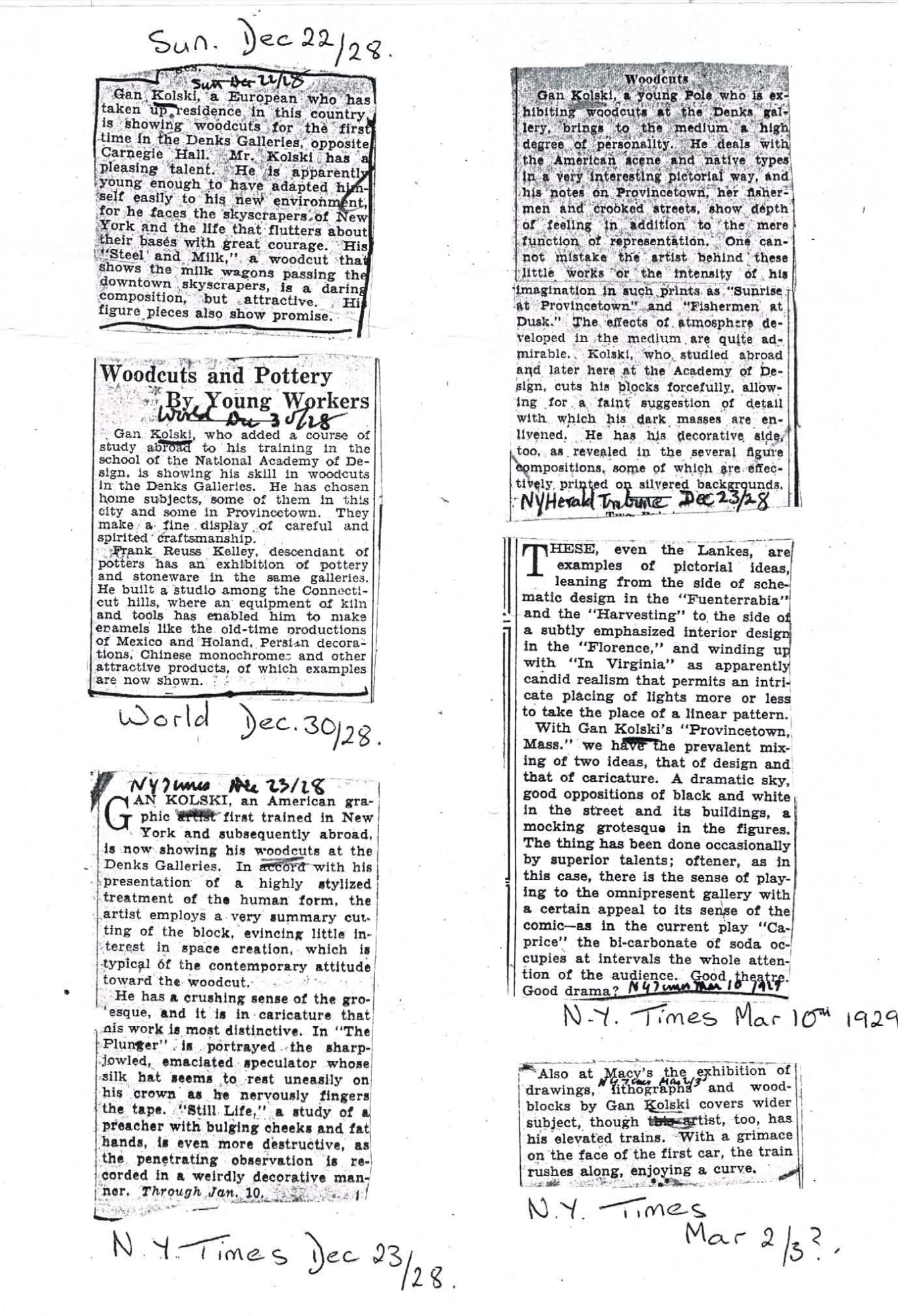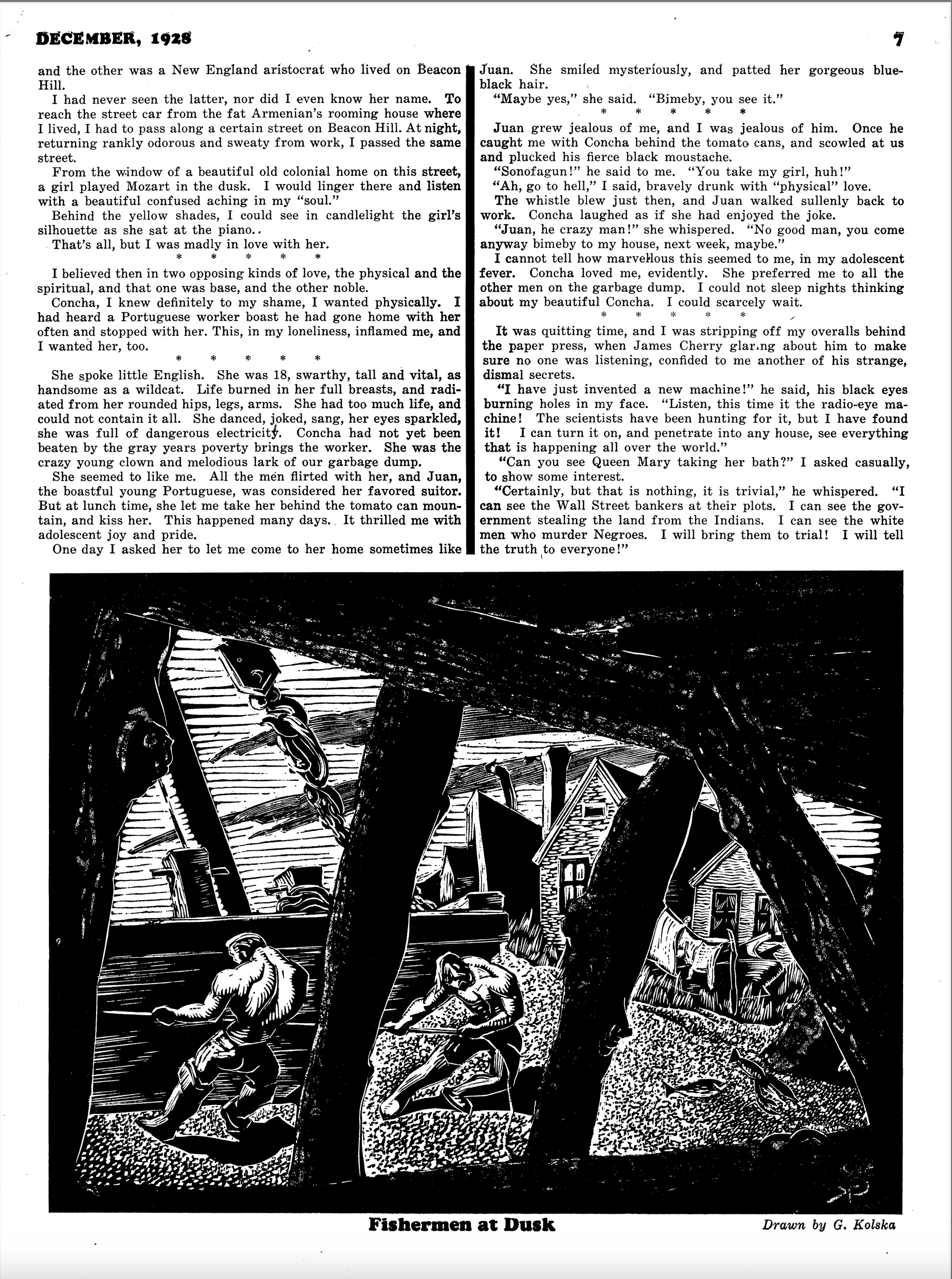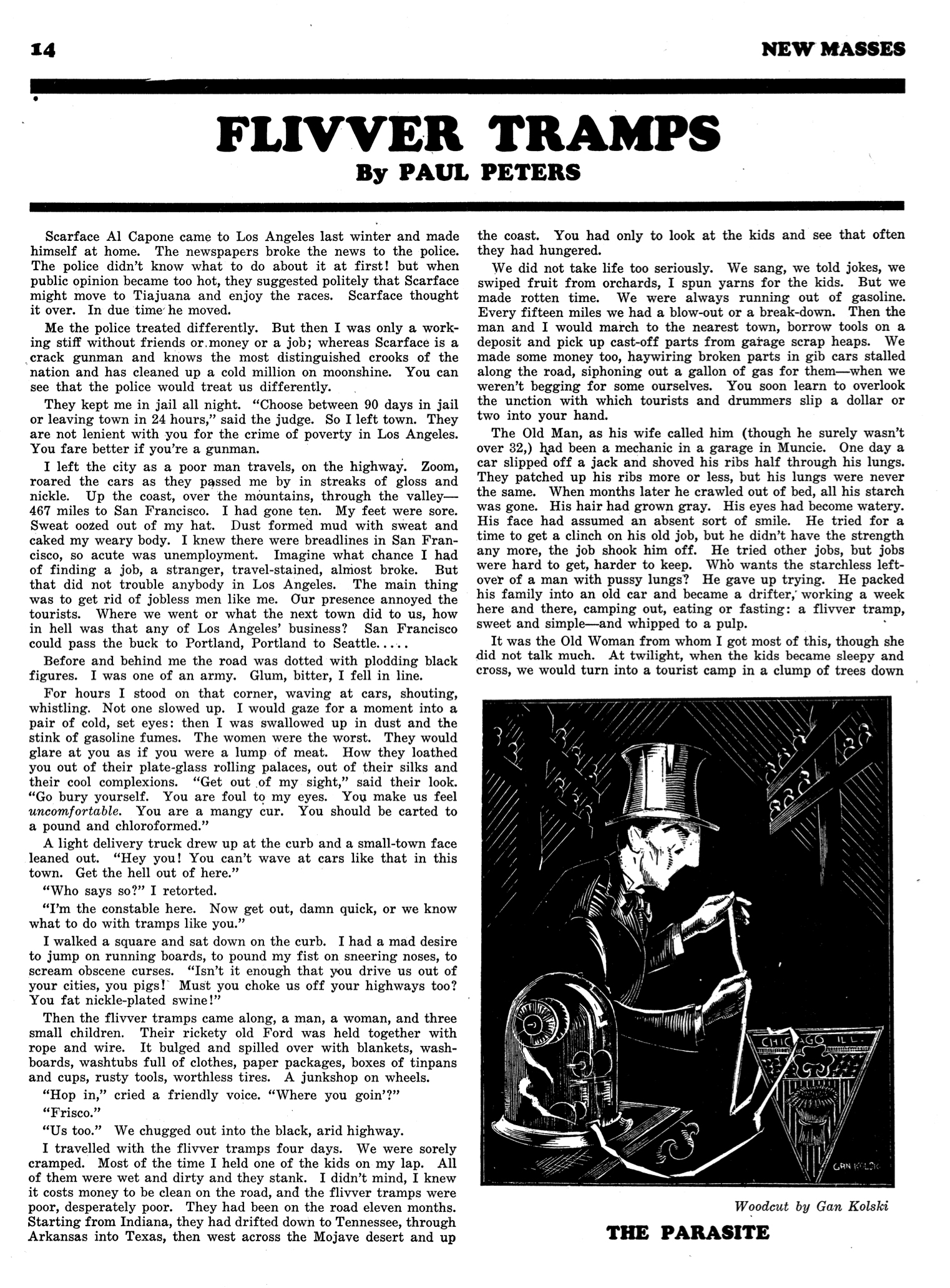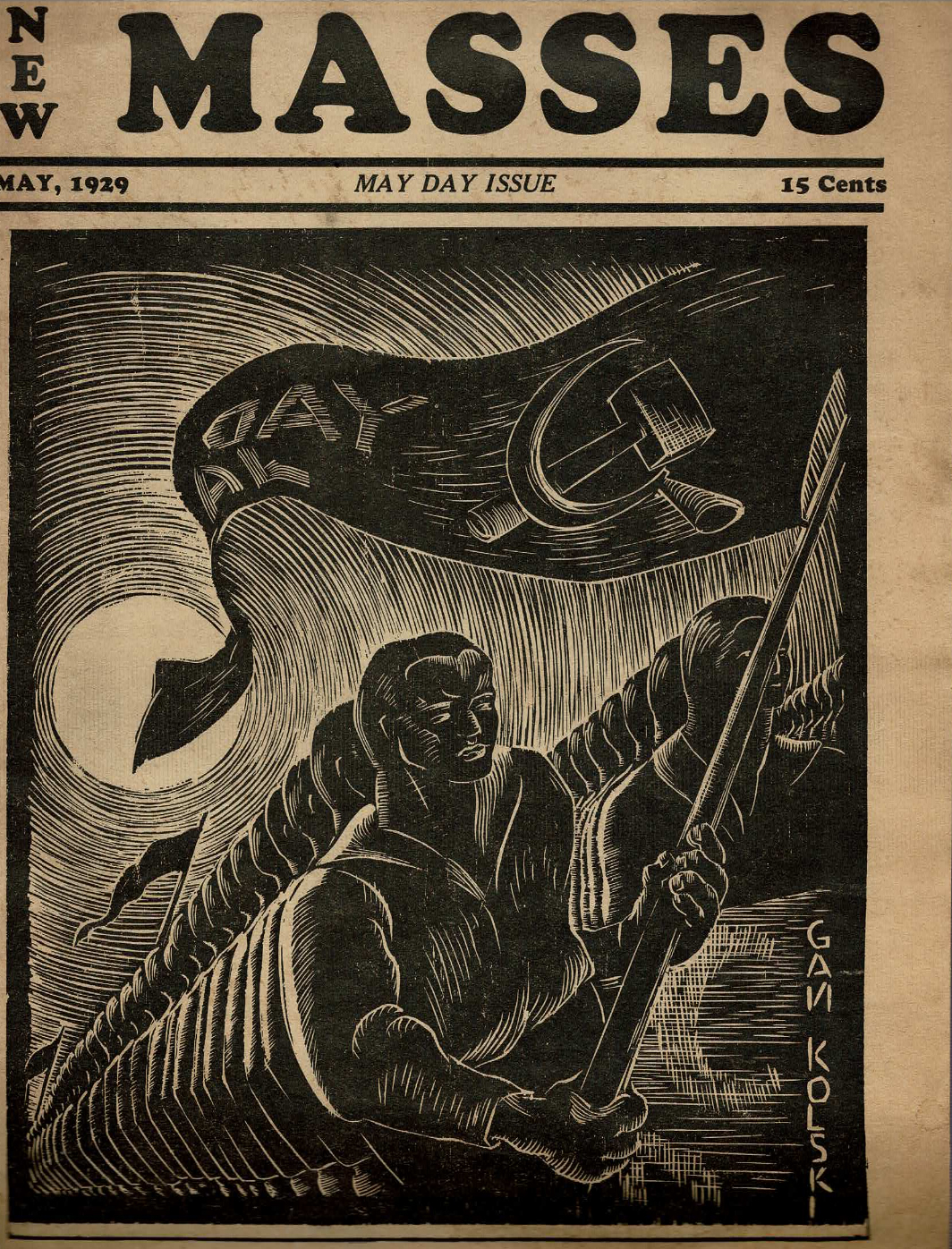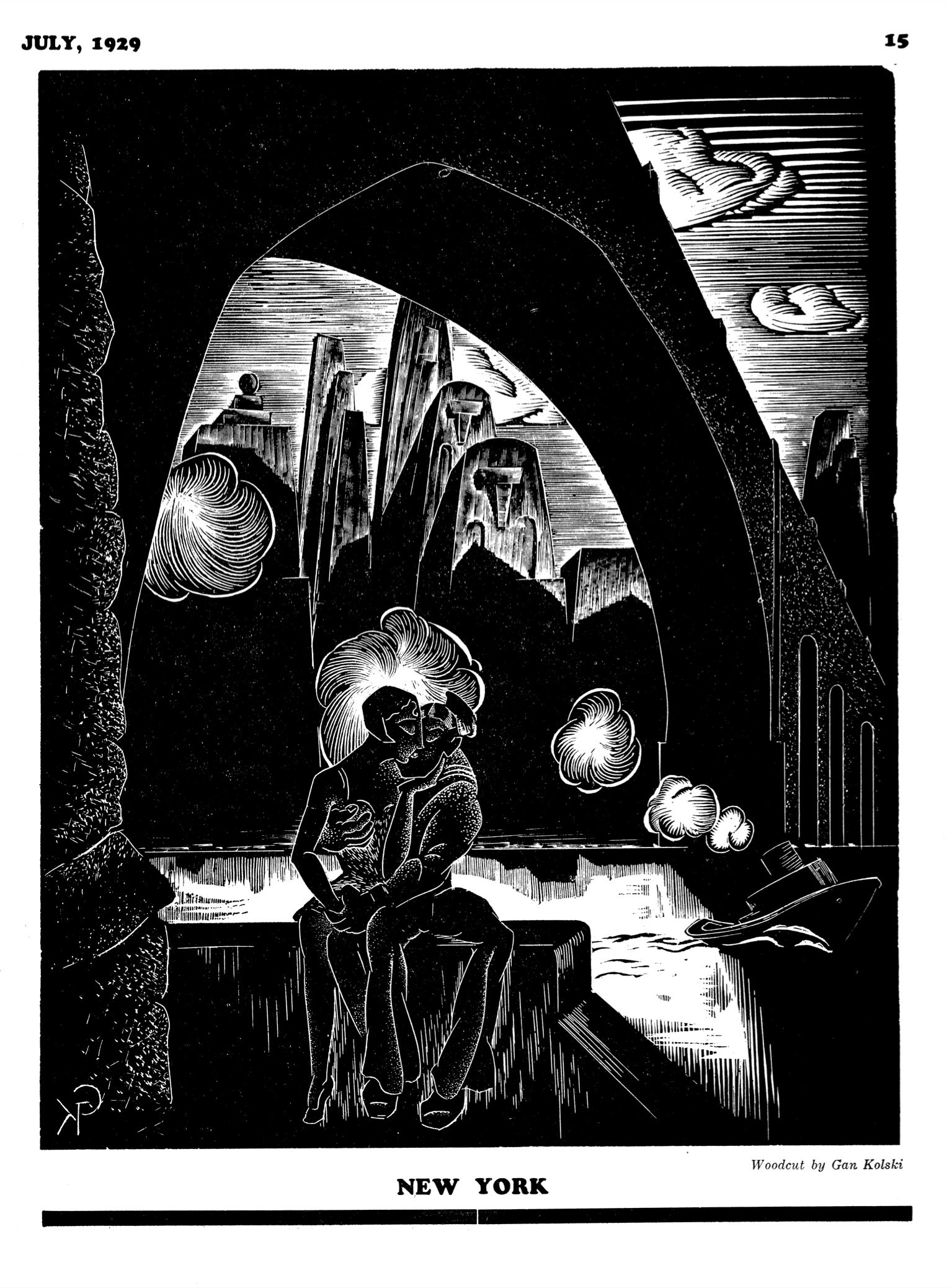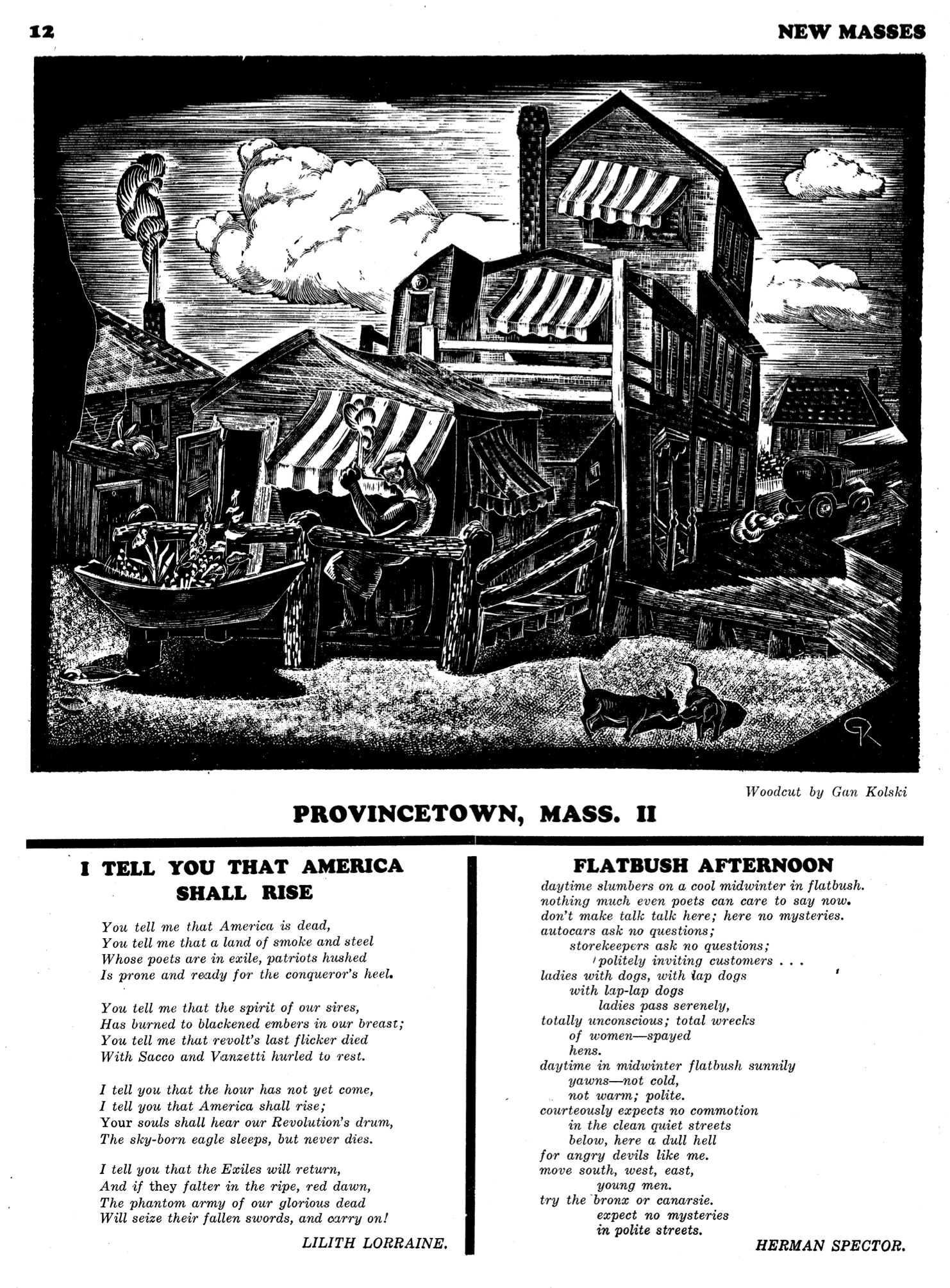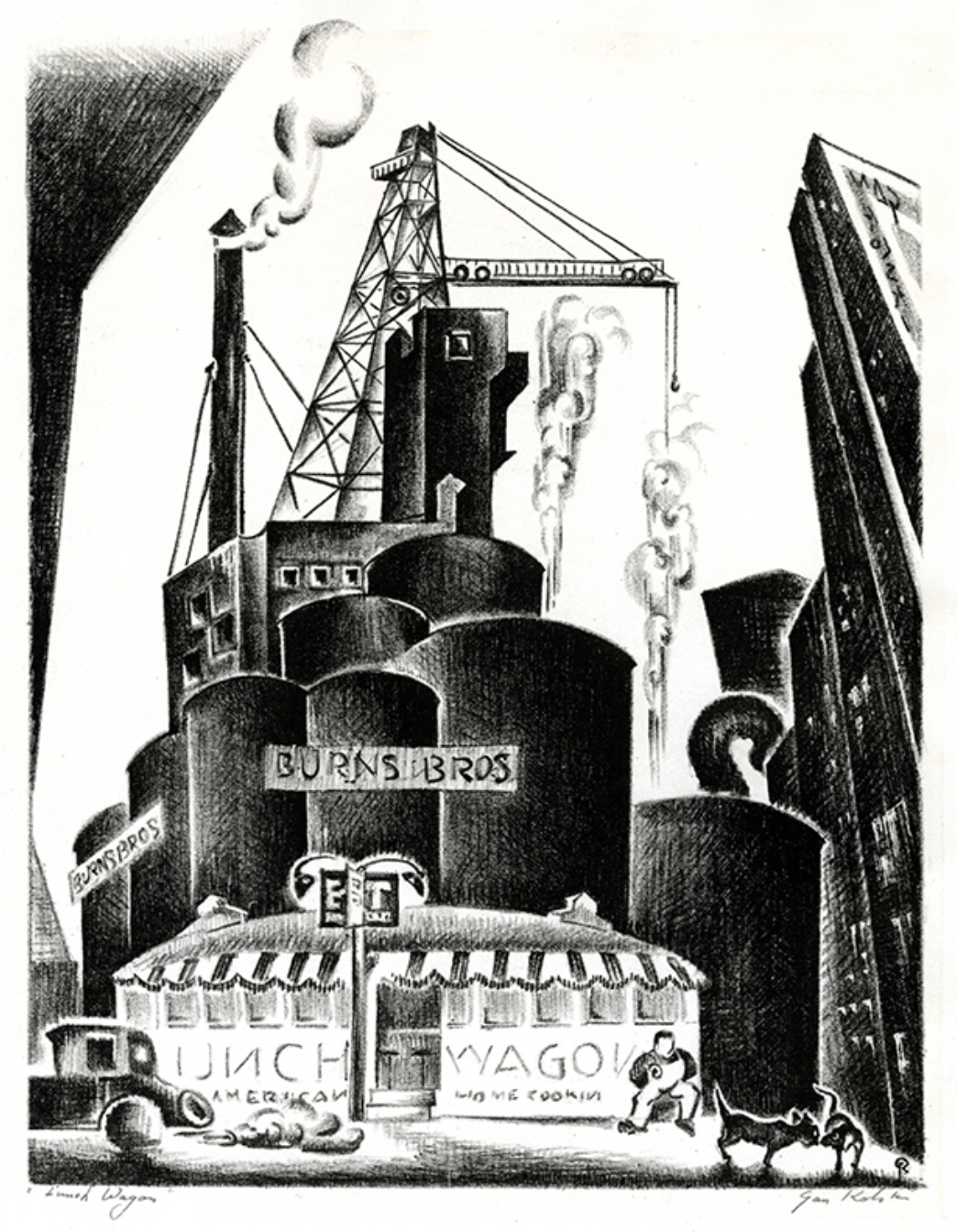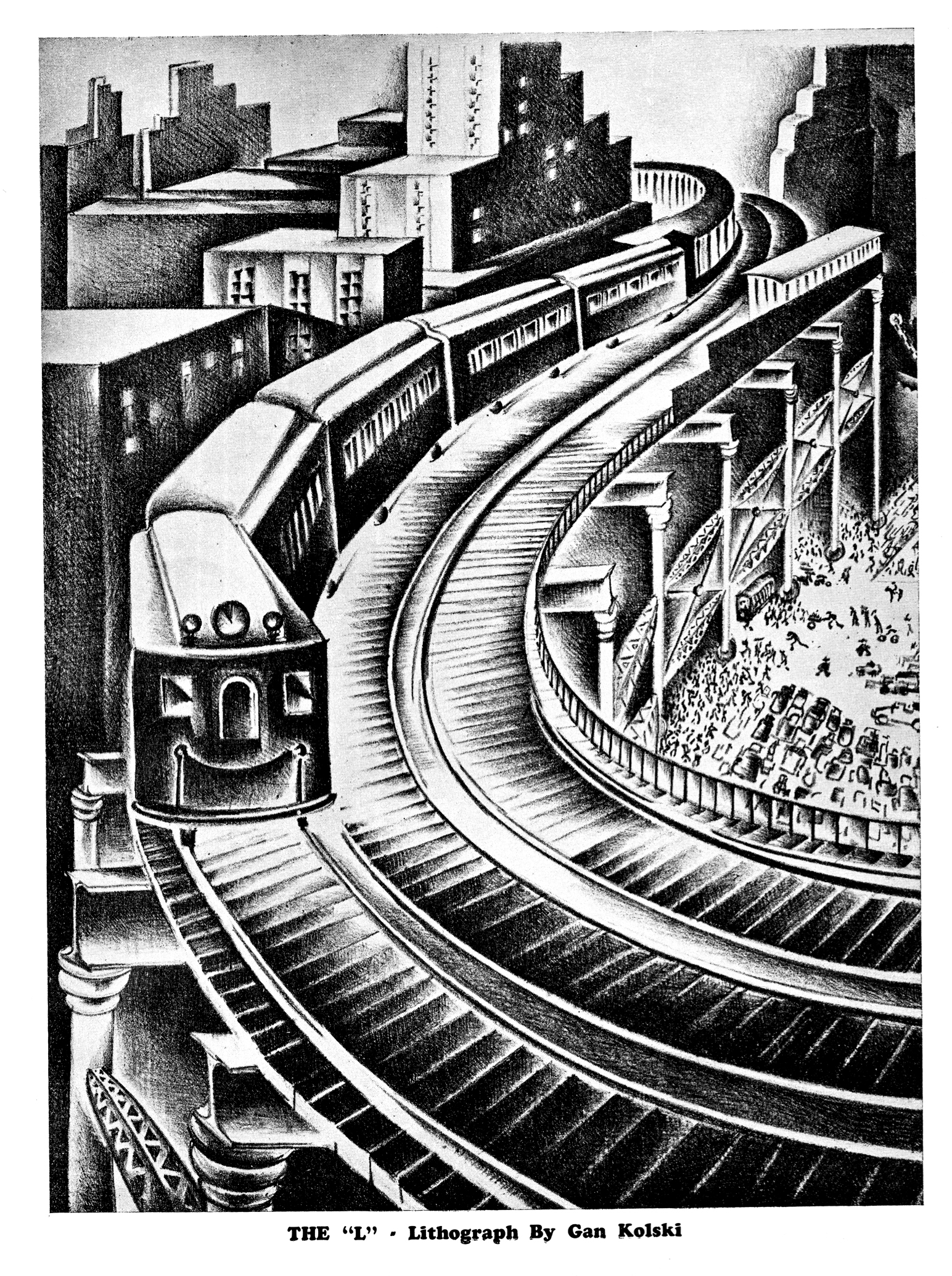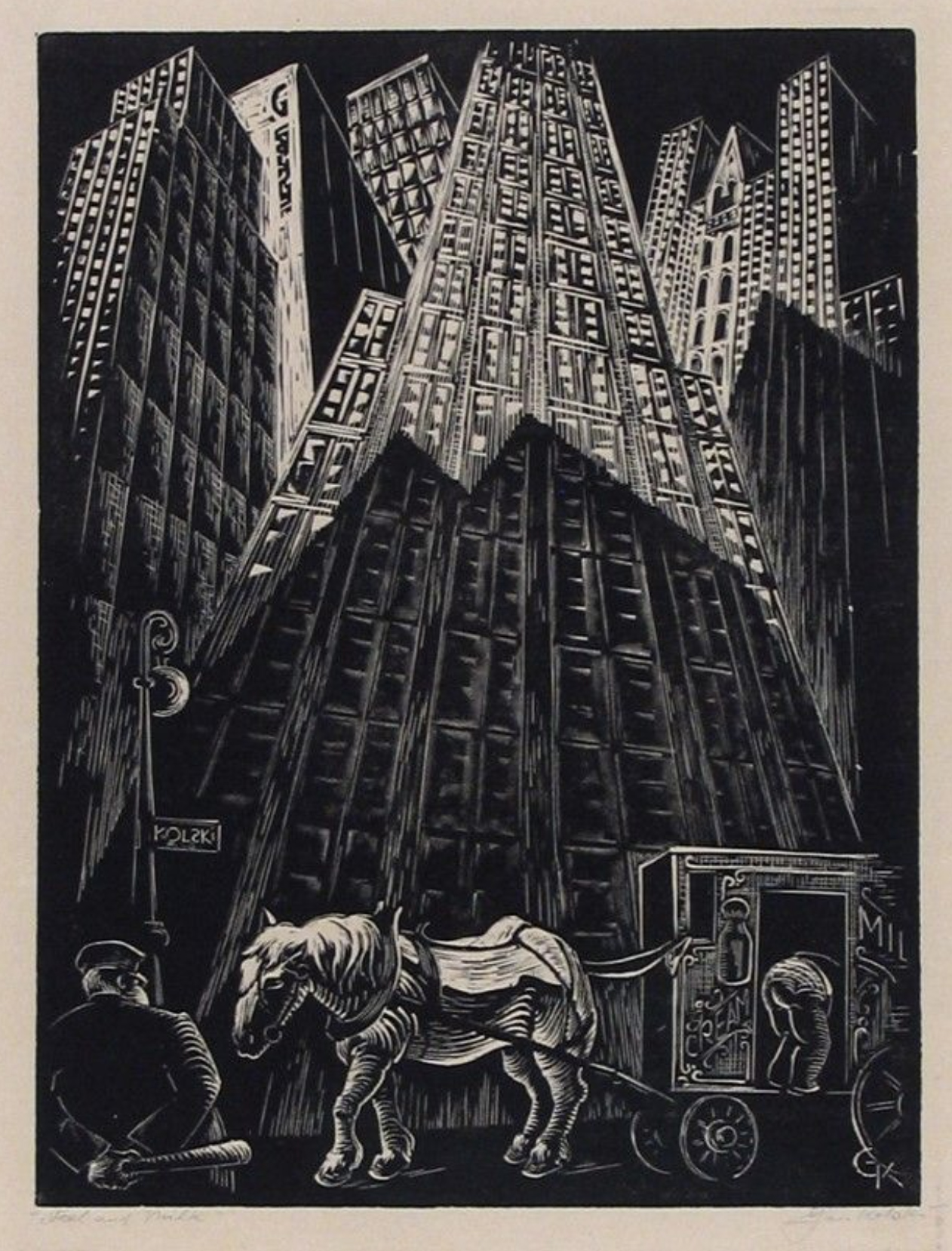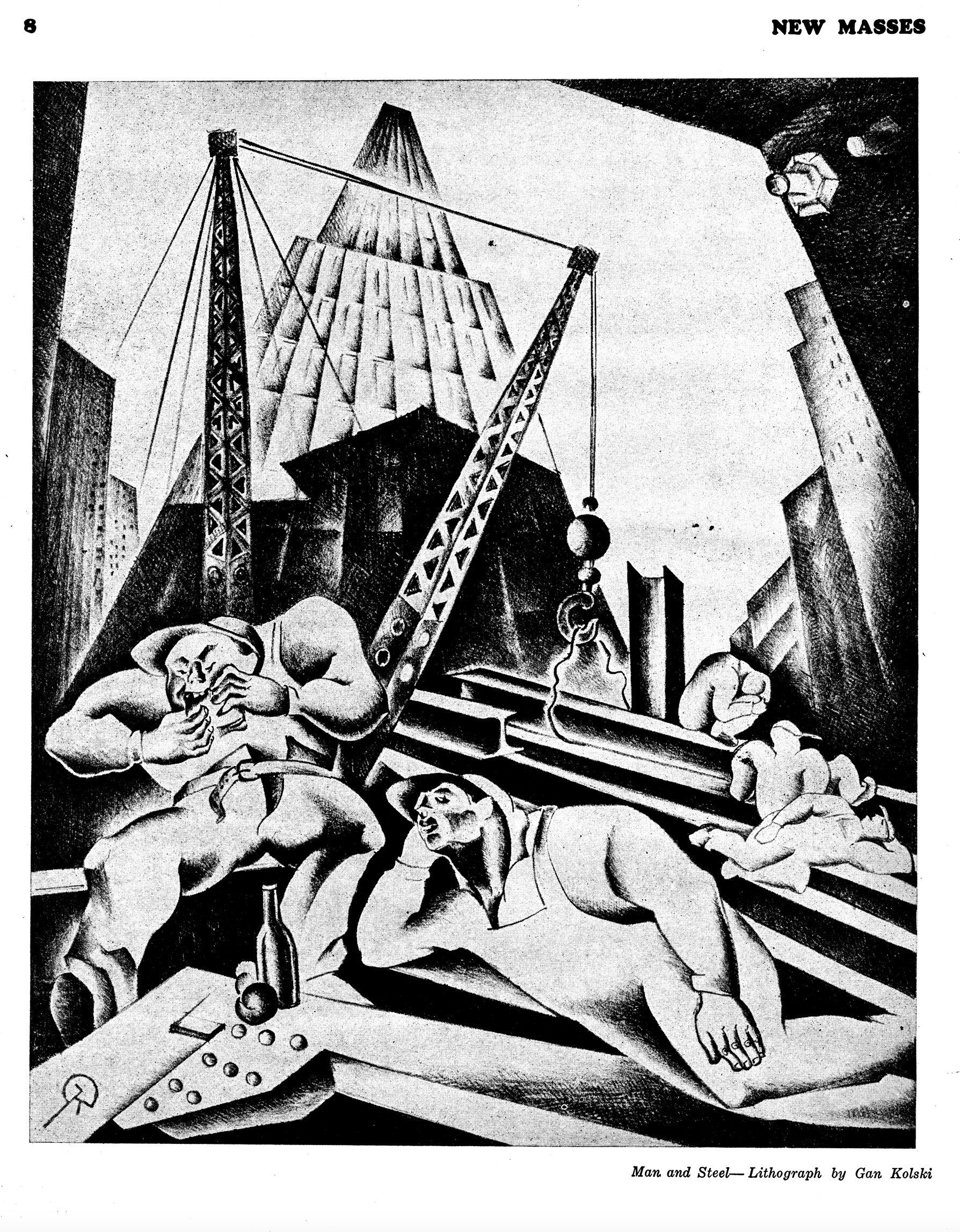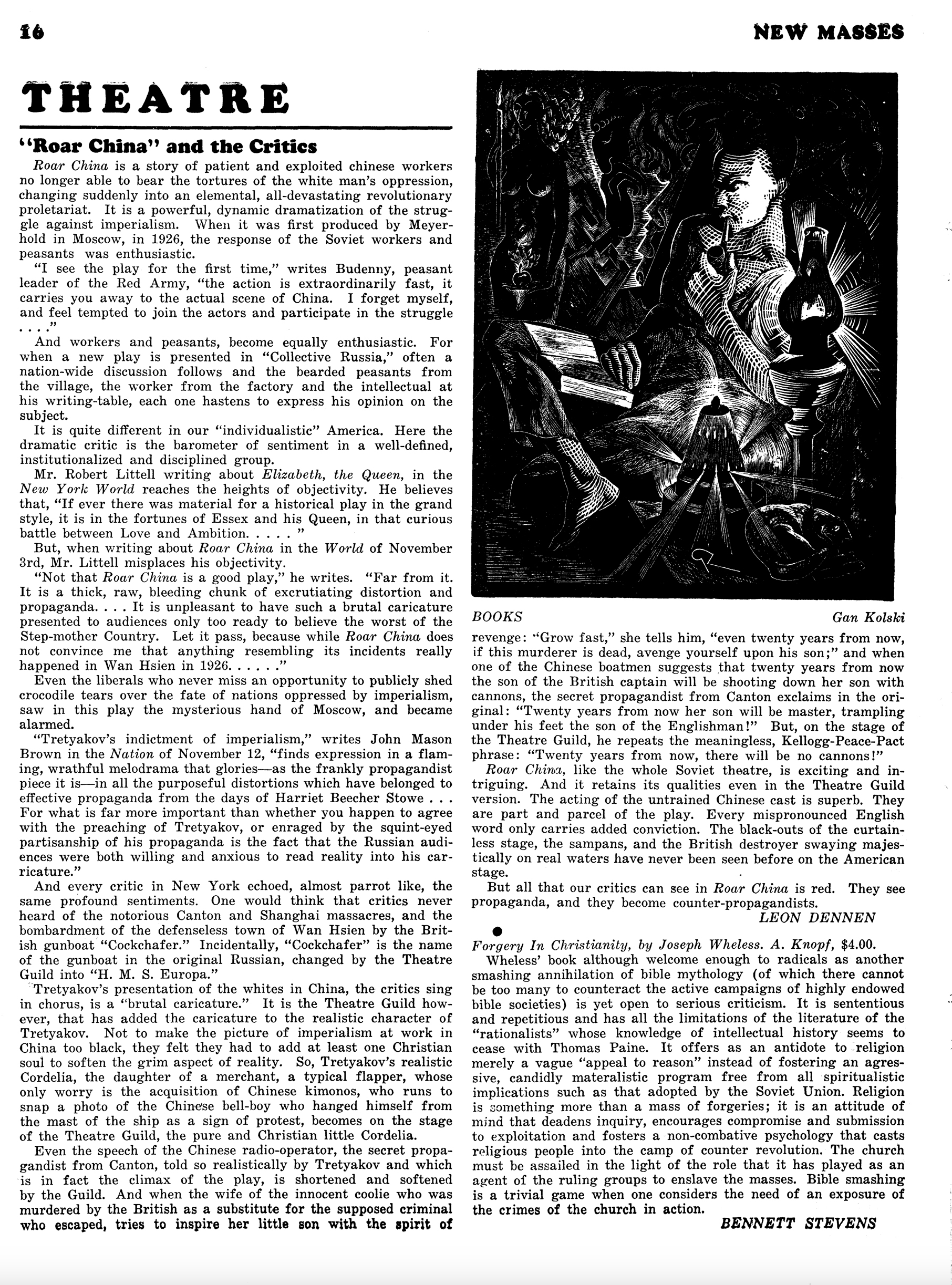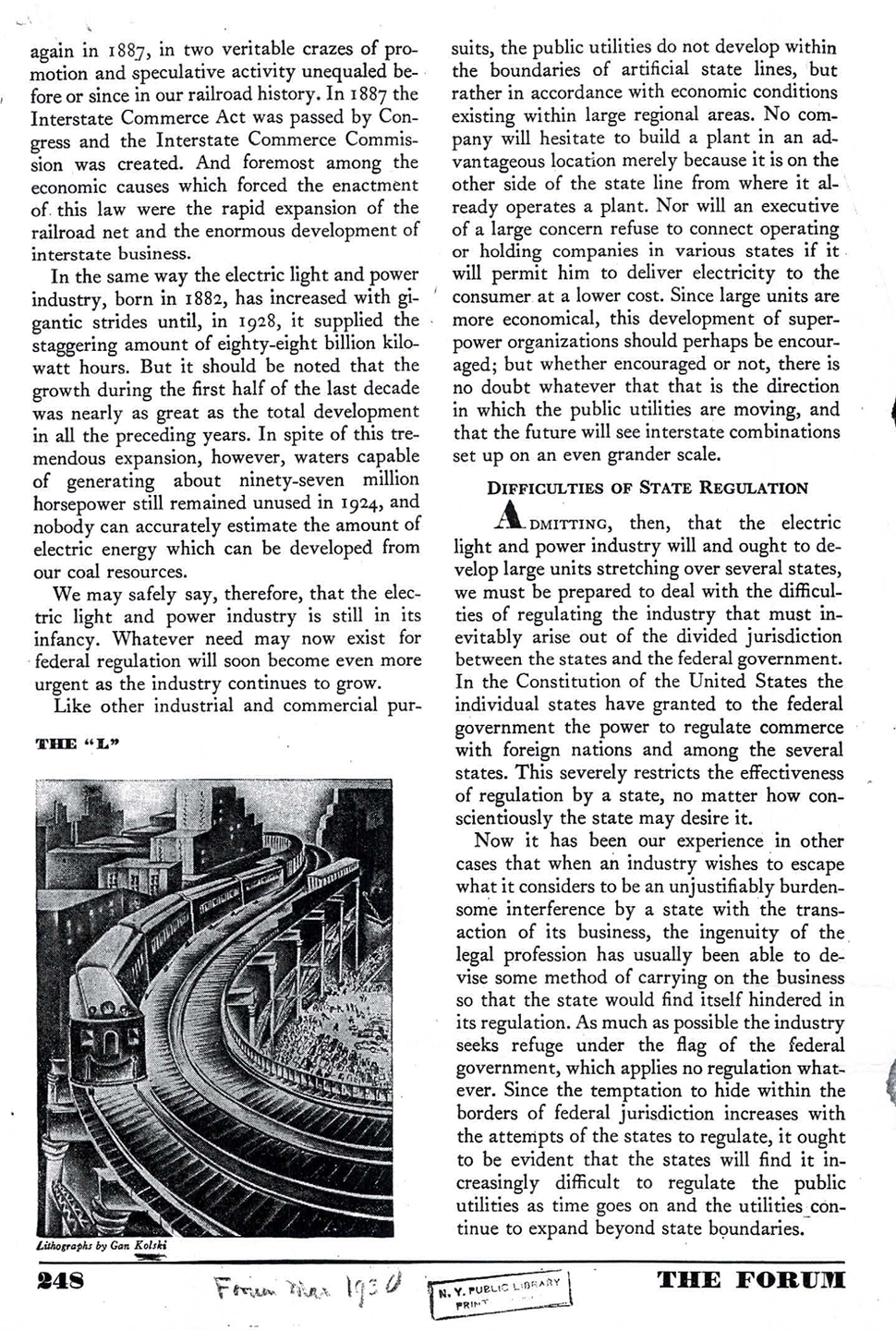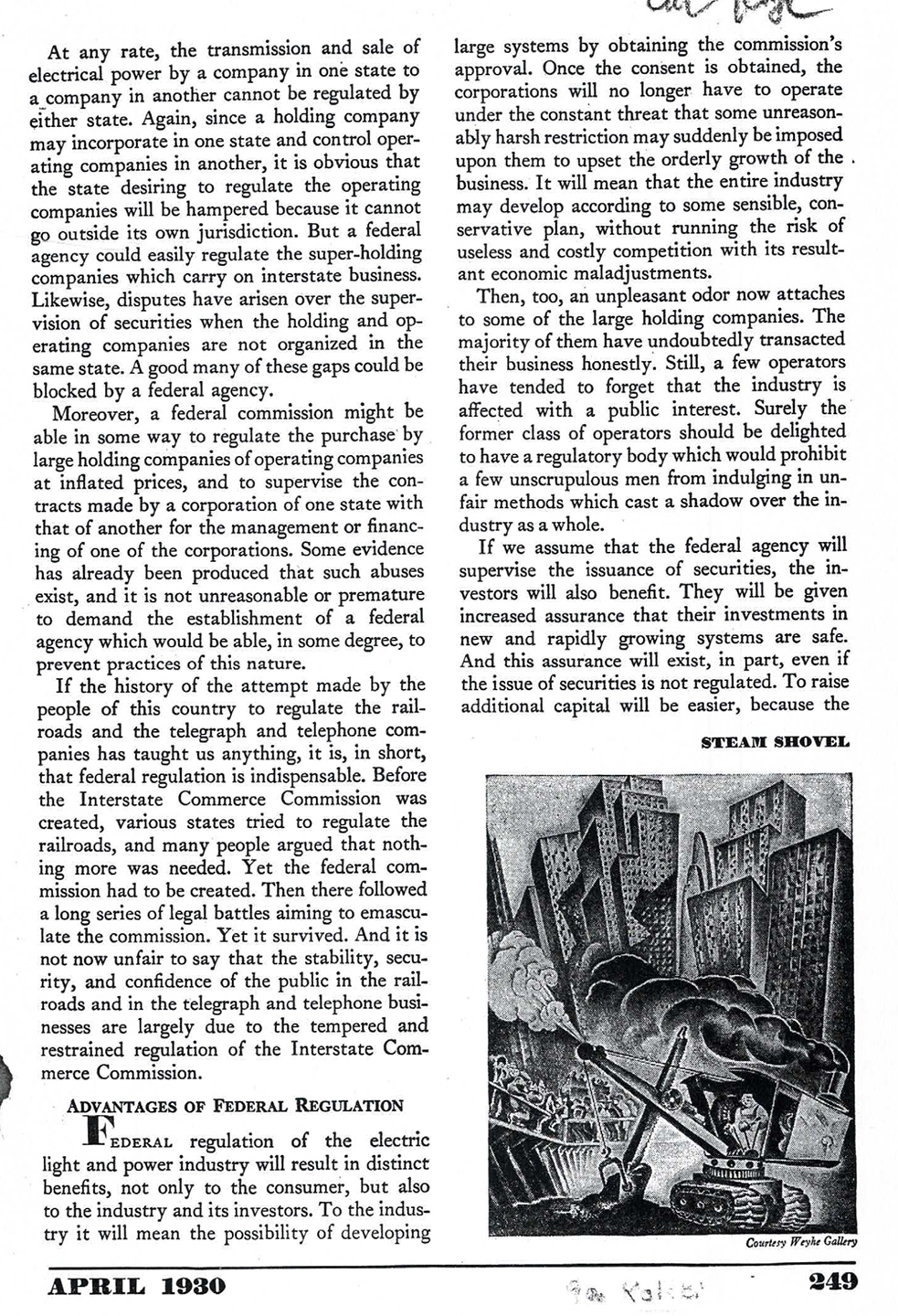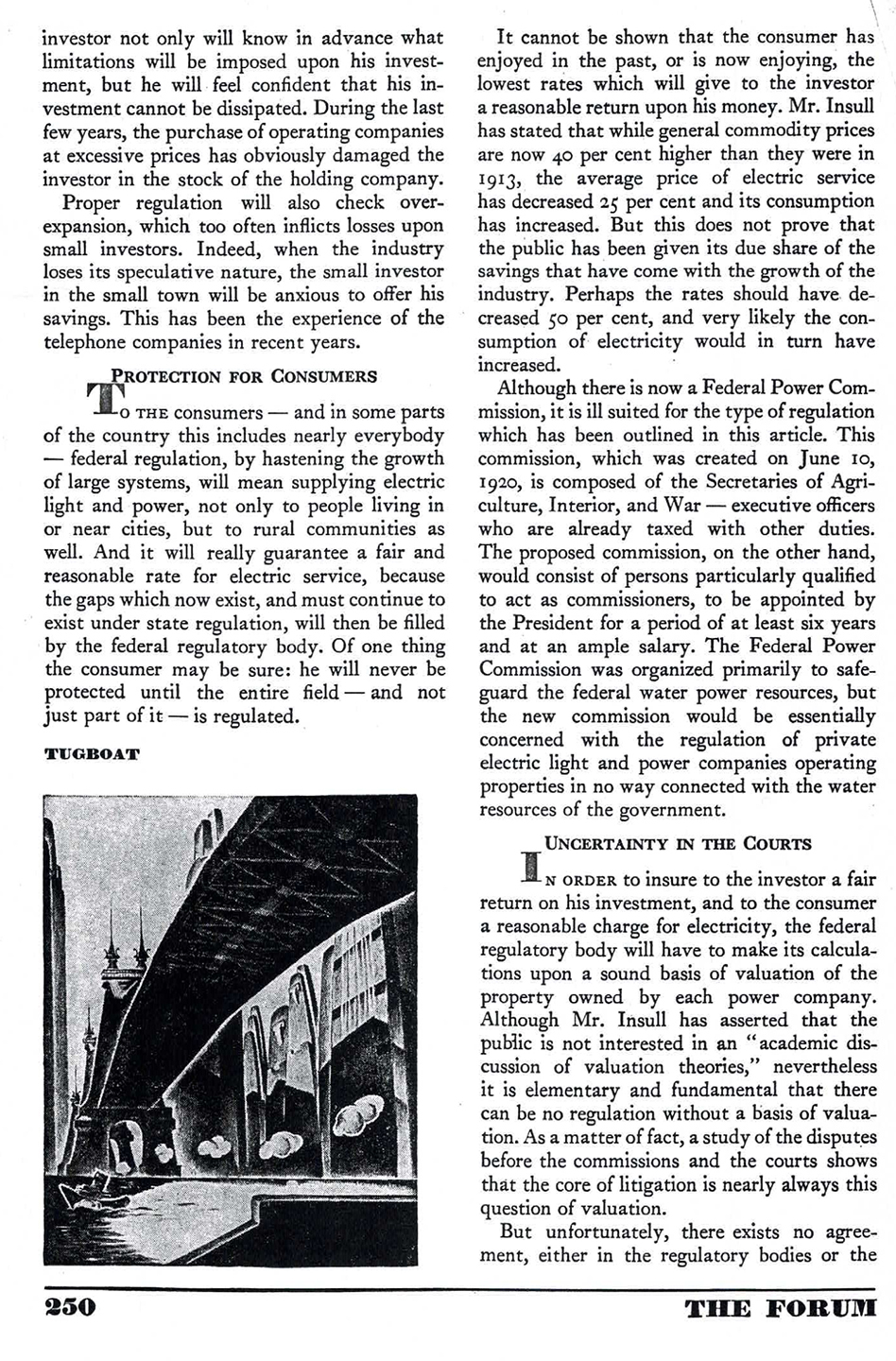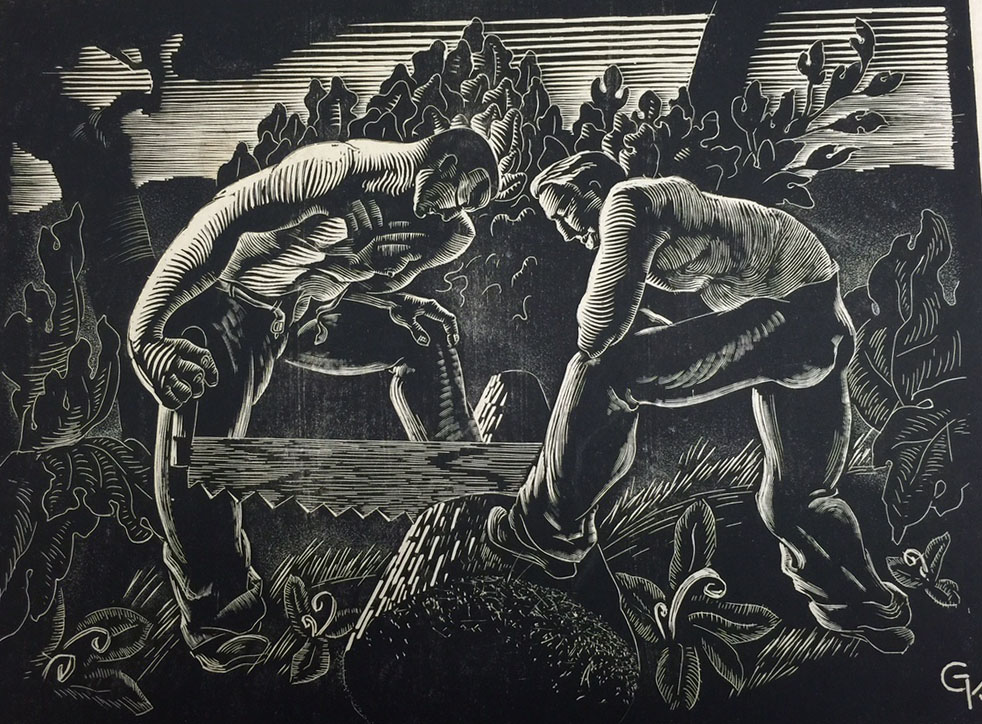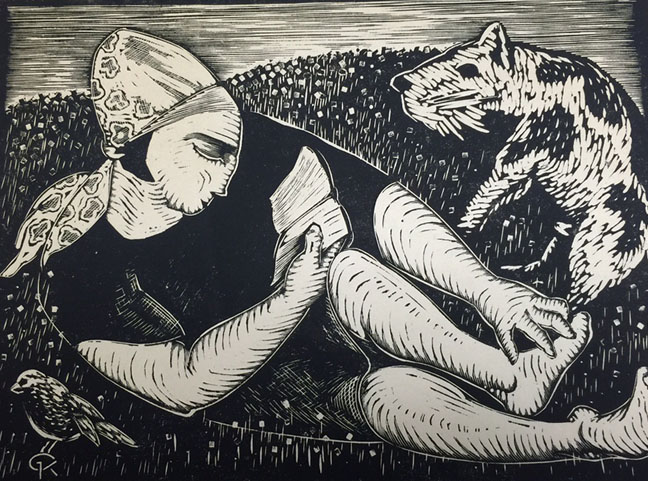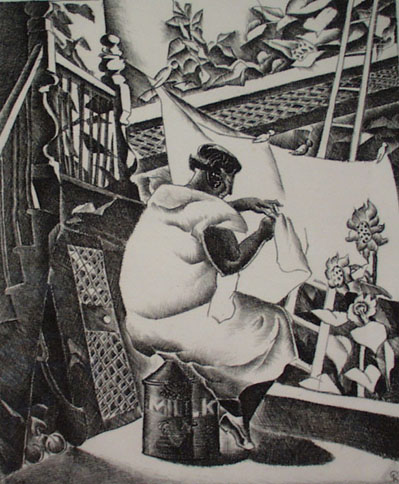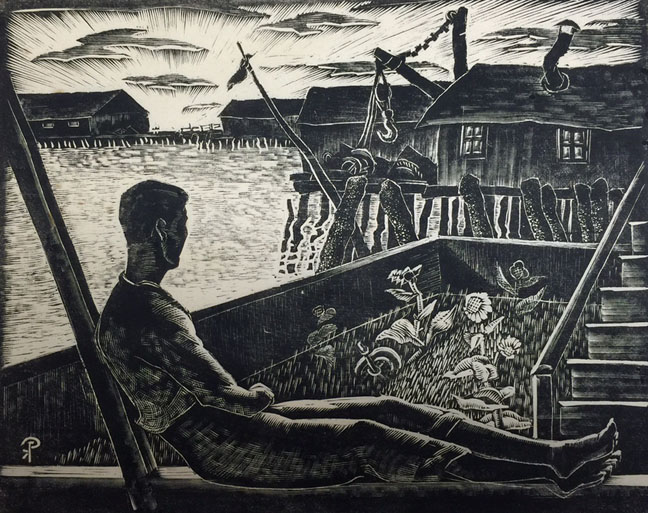Gan Kolski: His End is My Beginning
Introduction: suicide
(From the pink tab on the left page)
“The next morning a young Polish artist from Greenwich Village took his place [in the hospital room]. He had had his tonsils out and had a little heart trouble. He was there about four days and then went home. He had a very beautiful wife who came to see him every morning. Three or four days after he left the hospital I picked up the morning paper and there on the front page it told about him jumping off the new Hudson River bridge to the rocks 200 ft below. Why he did it I don’t know. It seemed that he had everything to live for. He was young and already well known. Some of his works were hanging in the art gallery of the N.Y. Public Library; the Brooklyn Art Museum, etc. He had a school at Provincetown, Mass., summers.When he was going to school at night, he said, he was making over $100 a wk painting, moving picture posters and advertising material for the Fox Film Co.
“He told of making an automobile trip recently thru the coal fields of W.Va. and Ky. He spoke of the beautiful scenery among the Blue Ridge Mts., Shenandoah Valley, etc. At the hospital they seemed to think that he had allowed his artistic temperament to go too far so that he became a little unbalanced, etc.”
This typed letter and the hand-written letter above were sent to a print collector who was researching the Polish-American Artist Gan Zigormas Kolski (1899-1932). The collector, who is also a print dealer, recently sent me the letters, newspaper clippings, and exhibition notices that he had gathered with the possibility of writing a catalogue resonné on Kolski.
I first came across Kiosk’s prints when I purchased two in 1987 from the Mary Ryan Gallery in New York. After the Storm (above) was one of them. I believe the setting is Provincetown (mentioned in Tilghman Haines’ letter) as Provincetown was the setting for a number of his woodcuts. As a print collector focusing on American prints c. 1920-50, I’ve known the print dealer and have had conversations about Kolski over the years. Finally earlier this year he sent me his Kolski files and images of some of the Kolski prints in his collection.
My own online research has added no other first-person accounts of Kolski, but I was able to find some of his lifetime publication history with the left-wing periodical The New Masses and in The Forum. While I wasn’t able to find the “front page” article that Haines referred to, I was able to find this short Associated Press news item, date April 18, 1932, that was published in several U.S. newspapers.
Scrawled across a picture of himself in his pocket was the message:
“If you cannot hear the cry of the starving millions, listen to the dead brothers. Your economic system is dead. Cremate me, fellows, and send the bill to Gan Kolski of 78 Horatio Street.”
Perhaps more information, even that front-page obituary, will come from videographer Shalom Gorewitz, who maintains a blog “Electric Jew.” On 14 Nov. 2010 he published a post “Just another Day,” which read:
I suddenly remember Gan Kolski and his dive off the GWB [George Washington Bridge] during the last great depression. He left a note and there was a thoughtful obituary in the Herald Tribune shortly after. Kolski had befriended an artist who later was one of my mentors and inspirations, Zach Gitlin. On his deathbed, Zach gave me a portfolio of Kolski’s work and said “You’ll know what to do with it.”
Kolski and Galleries
In Gorewitz’s blog he adds a little bit of what Gitlin told him about Kolski’s life:
I’ve often wondered about Kolski’s last days. After Zach gave me the portfolio, I got some time at MOMA library to research his life and career. Not much was known–he immigrated from Poland as a child, loved to draw, made images mostly of laborers in risky work sites. His drawings were used for cover and illustrations in the New Masses magazine, an important radical left journal of the time. He had a few shows, but all I could find anything about was one at the New School.
While I do have a little information about Kolski’s New School exhibition (see section on newspaper clippings), the collector/dealer sent me ephemera from two other shows.
This brochure from the 1928-9 exhibition at the Denks Galleries on 57th Street, Manhattan, provides a little biographical note on Kolski’s studies and travels.
The illustration here is his woodcut from the cover of the Denks exhibition brochure. I just gave it the title Provincetown because that’s what dealers tend to call it. In the Denks listing it could be either #3 “Sunrise at Provincetown” or #22 “Provincetown, Massachusetts.”
On the Macy Gallery cover is Kolski’s lithograph The L.
These newspaper clippings make reference to both exhibitions.
The Times’s writer (lower right) commented on The L in the Macys show: “With a grimace on the face of the first car, the train rushes along, enjoying the curve.”
And in the Times clipping above that one, the article reads: ‘With Gan Kolski’s ‘Provincetown, Mass.’ we have the prevalent mixture of two ideas, that of design and that of caricature. A dramatic sky, good oppositions of black and white in the street and its buildings, a mocking grotesque in the figures.”
And in the Herald Tribune clipping (upper right), the reviewer of the Denks exhibition stated Kolski “brings to the medium a high degree of personality. He deals with the American scene and native types in a very interesting pictorial way, and his notes on Provincetown, her fishermen and crooked streets, show depth of feeling in addition to the mere function of representation.”
Kolski and New Masses
Besides art exhibitions and newspaper reviews, Gan Kolski had significant exposure by having his prints published in the New Masses, a magazine that was highly regarded in left-wing, even Communist circles. His artwork also appears in The Forum and Plain Talk.
On one of my online searches I came upon this page (left) in the blog Revolution’s Newsstand (LINK). It has both two brief bios (one under the self portrait as it appeared in the New Masses and one written by the blogger) and images of 12 Kolski prints that, according to the blogger, appeared in the New Masses between March 1929 and December 1930.
The New Masses bio, which ran in the January 1930 issue, is reliable because Kolski, who was a contributing editor at the time, no doubt provided the details. The blogger’s bio noted his economic situation–”often unemployed”–his political affiliations–”a Communist and active in the John Reed Clubs.” It suggested that Kolski’s suicide “had a real impact on the city’s world of left artists.” I wish it had more to say in that regards.
But the blogger’s post was the catalyst for an online search that brought me to a section in the marxist.org website (LINK) that posts a digital archive of the New Masses from 1926 to 1948. It also has an index for issues 1936-1936. Thanks to the index, I found that the first instances of Kolski prints published in New Masses occurred in 1928, not 1929. Perhaps the Revolution’s Newsstand blogger didn’t realize that in the December 1928 issue Kolski’s name was misspelled as “Kolska.” So with the help of that index, here are pages, in chronological order, from the New Masses that reproduced Kolski prints.
May 1929 was the only month in New Masses where a Kolski print was featured on the cover. The collector/dealer provided this photo of that browned cover. This issue also had his woodcut The Swimming Club on page 11.
This is from the August 1929 issue. Kolski’s name for the first time appeared in the list of contributing editors in this issue.
Perhaps the Kolski litho on this page is titled Lunch Wagon, the name given to item #4 on the Macys exhibition list.
This ran in the January 1930 issue, which also contained his litho self portrait.
This also was in the January 1930 issue.
On this copy of the print, Kolski wrote the title as Steel and Milk.
This ran in the April 1930 issue.
The last Kolski print ran in the December 1930 issue of New Masses. His name was dropped from the list of contributing editors after the January 1932 issue.
Kolski: Der Hammer and The Forum
The Yiddish Communist periodical Der Hammer also put Kolski’s May Day woodcut on its cover two years after New Masses ran it 0n its May 1929 edition.
The long-running (1886-1950) and very respected The Forum magazine also published Gan Kolski prints in 1930. In March a untitled woodcut illustrated “Prison Blight,” by former political prisoner Ralph Chapin.
Then in April his prints appeared with W. Charles Poletti’s article “Super-Power: A Solution.”
Tugboat also ran in The forum in October 1930 under the title The Bridge. It was the second woodcut shown in a two-page spread with The fishermen.
Kolski and Dreiser
The collector/dealer also sent me two pair of correspondence between Gan Kolski and Theodore Dreiser. When I asked him about the Kolski-Dreiser connection, he wrote: “Theodore Dreiser was a famous author of the time. He was involved in radical politics and was an avowed socialist. He was involved in the Sacco and Vanzetti case among other radical causes. I’m not sure if he and Kolski knew each other well, but I would think that Kolski saw him as a comrade with his political views.”
In November 1929, Kolski wrote to Dreiser hoping to “use your name as a reference on the John S. Guggenheim Fellowship application.” Kolski was seeking funds to “study abroad the history and the contemporary movement in art.” Here Dreiser replied: “… you may do so, but I am afraid I really cannot be of any help to you in telling you how to precede in the matter.”
In Kolski’s May 1931 letter, he requested Dreiser’s “opinion and criticism” of the planned book of woodcuts. But Dreiser’s secretary wrote back that Dreiser’s workload “makes it impossible for him to look over the book of wood-cuts you are compiling”
Kolski never published a book of woodcuts.
Newspaper clippings: Late and posthumous exhibitions
In the 28 Feb. 1932 New York Herald Tribune reviewer of an exhibition Kolski had at the New School for Social Research said: “Mr. Kolski is inclined to introduce notes of wit or satire into his observations, as in the print called ‘Great White Way,’ with the week’s wash fluttering on the backyard clothesline. Often he tends to exaggerate unduly his effects, which are neither clearly realistic nor entirely abstract in design.”
On the upper right, an article titled “Kolski Memorial Group” in the 1 May 1932 New York Times stated that a memorial group of Kolski prints was featured in the “Rebel Arts” exhibition at the Rand School, Kolski having committed suicide on 18 April. The reviewer wrote: “The Kolski graphics make an impressive showing; more impressive, even, than the one-man exhibition of his work earlier this season at the New School for Social Research. The gay and ghostly ‘Great White Way’ (laundry dancing on a line at night) and the Baudelairian ‘Flower’ have never been seen before, but they do not prepare one for the idyllic mood of such a paper as ‘Summer,’ the monumentality of ‘Children of the Universe,’ nor the sheer Blake-like fantasy of the aspiring shadows of ‘Escape.’ ”
While I don’t have images of Kolski prints Great White Way or Children of the Universe, I do have Summer (from my own collection), Escape (shared by the collector/dealer) and Flowers from an online search.
Other Kolski prints
After printing this version of The Kiss, Kolski trimmed the woodblock and issued the The Kiss as follows:
***
Trackback URL: https://www.scottponemone.com/gan-kolski-his-end-is-my-beginning/trackback/









